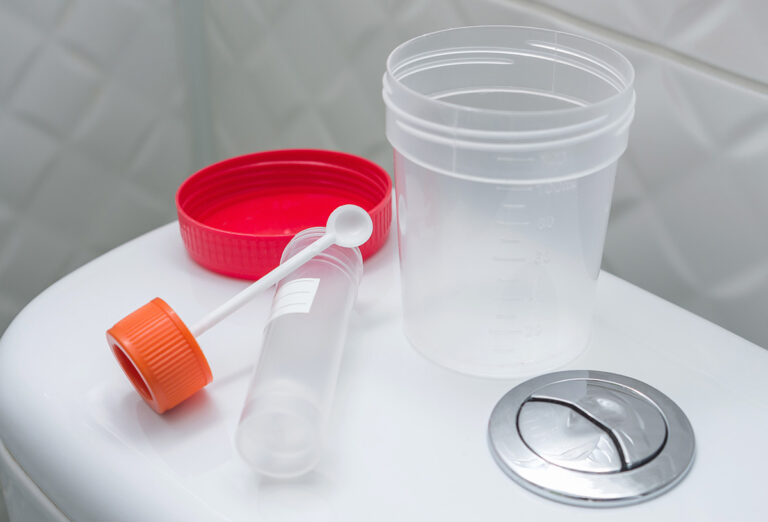Patients with IBS often struggle with persistent symptoms like bloating and irregular bowel habits, and for many, SIBO may be an overlooked contributor.
Despite its prevalence, diagnosing SIBO remains inconsistent. Clinicians face varying test methodologies, unclear gas interpretations, and questions about reliability, which complicate decision-making and care.
Understanding the development of breath test technology helps clarify its role in practice. From hydrogen-only tests to multi-gas, at-home options, the landscape has shifted significantly.
This article offers a clear, evidence-based overview of today’s leading SIBO breath tests, covering test selection, interpretation, and clinical considerations.
Whole person care is the future.
Fullscript puts it within reach.
healthcare is delivered.
Foundations: What Every Provider Should Know
Before ordering a SIBO breath test, it’s important to understand the underlying physiology and clinical indicators that point to microbial overgrowth. Recognizing the mechanisms and gas-specific symptom patterns improves test selection and interpretation.
Microbial Overgrowth Mechanisms
Several factors can drive bacterial overgrowth in the small intestine:
- Retrograde migration of colonic flora, especially in cases of ileocecal valve dysfunction
- Reduced gastric acid, bile, or pancreatic enzyme output, impairing natural antimicrobial defenses
- Motility disorders, including disrupted migrating motor complex (MMC) activity and postsurgical adhesions
- Overgrowth of methanogenic archaea like Methanobrevibacter smithii, which contributes to methane-predominant constipation (now classified as intestinal methanogen overgrowth, or IMO)
Symptom Patterns by Gas Type
Different gases correspond to distinct clinical presentations:
- Hydrogen (H₂): often linked to bloating, post-meal urgency, and diarrhea, typically aligning with IBS-D
- Methane (CH₄): associated with constipation and slower intestinal transit, consistent with IBS-C
- Hydrogen sulfide (H₂S): may cause loose stools, flatulence, and sulfur-like odor; often undetected in standard two-gas testing
Clinical Red Flags for SIBO Testing
Consider SIBO testing when symptoms or history suggest a disruption in gut microbial balance:
- Bloating or distension after meals
- Chronic constipation, diarrhea, or mixed patterns unresponsive to standard treatments
- Persistent IBS symptoms despite dietary or pharmaceutical interventions
- Past episodes of foodborne illness, frequent antibiotic use, or abdominal surgeries
- Systemic issues like fatigue, fibromyalgia, or restless legs syndrome, especially when unexplained by other causes
Diagnostic Technologies and Test Logistics
Selecting and executing the right breath test depends on understanding the nuances of gas production, test substrates, and patient history. The accuracy of results hinges not just on the technology used but also on proper test preparation and interpretation.
Breath Testing Fundamentals
SIBO breath tests work by measuring exhaled gases, specifically hydrogen, methane, and, in some cases, hydrogen sulfide, which is produced when overgrown microbes ferment a carbohydrate substrate.
Substrate choice plays a key role in the accuracy and relevance of SIBO testing. Glucose offers higher specificity and is best suited for identifying proximal small bowel overgrowth. Lactulose travels further along the intestinal tract, making it more effective for detecting distal overgrowth and intestinal methanogen overgrowth (IMO).
For patients with complex symptoms, frequent relapses, or poor response to previous treatment, combination kits using both substrates may offer broader diagnostic insight.. Timeline for accurate testing
Proper preparation is essential for valid breath test results:
- Discontinue antibiotics, probiotics, and promotility agents 2–4 weeks prior
- Follow a low-residue diet the day before the test
- Fast for 12 hours on test day, avoid smoking or exercising, and ensure proper sample collection
- If positive, initiate appropriate interventions from Day 1 to Day 14+
- Retest in 2–3 weeks if symptoms remain or recur
Mastering Test Interpretation
Interpreting SIBO breath test results goes beyond reading gas levels. Timing, magnitude, and gas combinations all contribute to diagnostic accuracy. A clear grasp of these patterns helps differentiate between overgrowth types and guides treatment planning.
Hydrogen Patterns
Hydrogen trends often signal classic SIBO:
- Early spike (≥20 ppm by 90 minutes): Suggests proximal small intestinal overgrowth
- Late rise: May indicate distal overgrowth or rapid gastrointestinal transit
Methane Patterns
Methane requires a different threshold and interpretation approach:
- CH₄ ≥ 10 ppm at any time: Indicates intestinal methanogen overgrowth (IMO)
- Single fasting methane ≥10 ppm (SMM): Diagnostic for IMO even without post-substrate rise
Hydrogen Sulfide (H₂S)
H₂S presents diagnostic challenges and requires targeted testing:
- Associated with loose stools and a sulfuric odor
- If H₂ and CH₄ are low but symptoms persist, consider H₂S overproduction
Mixed Overgrowth
When both hydrogen and methane are elevated, it indicates coexisting SIBO and IMO and may require more comprehensive or combination antimicrobial strategies.
Flat-Line and High Baseline Curves
Nonstandard curves may reflect prep or sampling issues:
- Flat-line: Could suggest poor preparation or H₂S-dominant suppression of other gases
- High baseline H₂: Often due to incomplete fasting, contamination from oral flora, or delayed transit time
Translating Test Results Into Action
Once a breath test confirms overgrowth, treatment needs to be tailored based on gas type, symptom severity, and patient context. Equally important is preventing recurrence by addressing motility and underlying contributors.
Gas-Specific Treatment Algorithms
Each dominant gas pattern has an associated antibacterial treatment approach. Hydrogen overgrowth typically responds to rifaximin 550 mg three times daily for 14 days. Methane (IMO) requires a combination of rifaximin and neomycin. For hydrogen sulfide, rifaximin with bismuth or an elemental diet trial may be effective.
Botanicals with Clinical Support
Botanical antimicrobials are widely used when antibiotics aren’t ideal. Evidence supports berberine, oregano oil, neem, and allicin, often given in 4–6 week cycles. Combination blends are best for mixed-gas presentations. These can be tailored based on tolerance and symptom patterns.
Recurrence Prevention: Motility and Terrain
Relapse is common without addressing motility and terrain. Prokinetics like erythromycin, prucalopride, or ginger help restore MMC function. Encourage 4–5 hour meal spacing to support motility. Address root causes like low stomach acid, adhesions, or immune dysfunction
Addressing Complexity and Retesting
Not every case follows a typical path. When results are inconclusive or symptoms persist, it’s essential to understand testing nuances, avoid common errors, and plan appropriate follow-up strategies.
Pediatric Considerations
Testing in children requires special attention to ensure accuracy. Age-adjusted methane thresholds are important, as CH₄ levels can vary with development. Pediatric-specific breath test kits and weight-based dosing guidance are essential for appropriate interpretation and treatment planning.
Common Pitfalls
Several factors can compromise breath test validity. Inadequate preparation often leads to false negatives or erratic gas curves. Variations in GI motility, whether delayed or rapid, can alter gas timing. Additionally, methanogens may consume hydrogen, masking elevations and obscuring true overgrowth.
Sample Rejection Criteria
Laboratories may reject breath samples based on:
- Failed CO₂ quality control, indicating improper sample collection
- Missing or poorly timed breath samples, which compromise curve integrity
Follow-Up Strategy
Effective follow-up ensures progress and helps identify alternate diagnoses when symptoms persist. Retesting is recommended 2–3 weeks after completing antimicrobial therapy if clinical improvement is incomplete.
A negative test with ongoing symptoms should prompt evaluation for other causes such as small intestinal fungal overgrowth (SIFO), general dysbiosis, or bile acid malabsorption. Additional assessments may include stool testing, organic acid profiles, or motility studies.
Frequently Asked Questions (FAQs)
SIBO testing and management can raise many practical questions, especially when navigating gas types, test selection, and treatment nuances. Below are answers to some of the most common concerns clinicians face in day-to-day practice.
What substrate should I choose for a patient with constipation?
Lactulose is typically preferred for constipation-predominant presentations, as it reaches the distal small intestine and is more likely to detect methane-producing organisms. If a comprehensive assessment is needed, a combo test with both glucose and lactulose may be considered.
When should I suspect hydrogen sulfide SIBO?
Suspect H₂S dominance when patients have persistent loose stools, excessive gas with a sulfuric odor, and low or flat hydrogen/methane levels on standard two-gas testing.
How do I interpret a high methane flatline?
A flatline with methane ≥10 ppm suggests intestinal methanogen overgrowth (IMO). This pattern may also suppress hydrogen readings, making it important to rely on absolute methane levels regardless of timing.
What are the best protocols for test prep?
Patients should discontinue antibiotics, probiotics, and motility agents 2–4 weeks before testing. Follow a low-residue diet the day before and fast for 12 hours before sample collection. Avoid smoking and exercise on test day to prevent confounding variables.
When should I repeat testing?
Re-testing is appropriate 2–3 weeks after completing treatment, especially if symptoms persist or were only partially improved. It may also be necessary if initial results were inconclusive due to sample quality or timing issues.
Which herbal antimicrobials are backed by evidence?
Berberine, oregano oil, neem, and allicin have shown clinical effectiveness in managing bacterial overgrowth. These are typically used in 4–6 week cycles and may be combined for mixed-gas presentations.
Key Takeaways
- Small intestinal bacterial overgrowth (SIBO) is a common but often overlooked cause of persistent IBS symptoms, and its diagnosis is complicated by inconsistent testing methods and interpretations.
- Accurate breath test results require strict preparation protocols, and proper interpretation involves analyzing gas types, timing, and curve patterns to distinguish between SIBO types, such as hydrogen-dominant, methane-dominant (IMO), or mixed cases.
- Treatment must be tailored to the dominant gas: rifaximin alone for hydrogen, rifaximin with neomycin for methane, and rifaximin with bismuth or an elemental diet for H₂S.
- Preventing relapse involves addressing underlying factors like gut motility, using prokinetics, maintaining proper meal spacing, and considering retesting or alternative diagnoses if symptoms persist despite treatment.
Disclaimer:
This content is intended for healthcare professionals for educational purposes only and does not substitute for professional medical advice, diagnosis, or treatment. Clinicians should use their own professional judgment and consider individual patient circumstances when interpreting breath test results or making treatment decisions.
Whole person care is the future.
Fullscript puts it within reach.
healthcare is delivered.
References
- AlSheikh, H. M. A., Sultan, I., Kumar, V., Rather, I. A., Al-Sheikh, H., Tasleem Jan, A., & Haq, Q. M. R. (2020). Plant-Based Phytochemicals as Possible Alternative to Antibiotics in Combating Bacterial Drug Resistance. Antibiotics, 9(8), 480. https://doi.org/10.3390/antibiotics9080480
- Barkin, J. A., Keihanian, T., Barkin, J. S., Antequera, C. M., & Moshiree, B. (2019). Preferential usage of rifaximin for the treatment of hydrogen-positive smallintestinal bacterial overgrowth. Revista de Gastroenterologia Del Peru : Organo Oficial de La Sociedad de Gastroenterologia Del Peru, 39(2), 111–115. https://pubmed.ncbi.nlm.nih.gov/31333225/
- Bin Waqar, S. H., & Rehan, A. (2019). Methane and Constipation-predominant Irritable Bowel Syndrome: Entwining Pillars of Emerging Neurogastroenterology. Cureus. https://doi.org/10.7759/cureus.4764
- Buan, N. R. (2018). Methanogens: pushing the boundaries of biology. Emerging Topics in Life Sciences, 2(4), 629–646. https://doi.org/10.1042/etls20180031
- Camilleri, M., & Atieh, J. (2021). New Developments in Prokinetic Therapy for Gastric Motility Disorders. Frontiers in Pharmacology, 12, 711500. https://doi.org/10.3389/fphar.2021.711500
- Gatta, L., & Scarpignato, C. (2017). Systematic review with meta-analysis: rifaximin is effective and safe for the treatment of small intestine bacterial overgrowth. Alimentary Pharmacology & Therapeutics, 45(5), 604–616. https://doi.org/10.1111/apt.13928
- Guo, H. Z., Dong, W. X., Zhang, X., Zhu, S. W., Liu, Z. J., & Duan, L. P. (2021). The diagnostic value of hydrogen sulfide breath test for small intestinal bacterial overgrowth. Zhonghua Nei Ke Za Zhi, 60(4), 356–361. https://doi.org/10.3760/cma.j.cn112138-20200731-00725
- Joost Algera, Colomier, E., Melchior, C., Hreinsson, J. P., Midenfjord, I., Egbert Clevers, Magnus Simren, & Törnblom, H. (2022). Associations between postprandial symptoms, hydrogen and methane production, and transit time in irritable bowel syndrome. 35(2). https://doi.org/10.1111/nmo.14482
- Lim, J., & Rezaie, A. (2023). Pros and Cons of Breath Testing for Small Intestinal Bacterial Overgrowth and Intestinal Methanogen Overgrowth. Gastroenterology & Hepatology, 19(3), 140. https://pmc.ncbi.nlm.nih.gov/articles/PMC10496284/
- Lin, E., Chua, K. S., Nipaporn Pichetshote, Rezaie, A., Gupta, K., & Pimentel, M. (2017). Measurement of Hydrogen Sulfide during Breath Testing Correlates to Patient Symptoms. Gastroenterology, 152(5), S205–S206. https://doi.org/10.1016/s0016-5085(17)30993-9
- Losurdo, G., Leandro, G., Ierardi, E., Perri, F., Barone, M., Principi, M., & Leo, A. D. (2020). Breath Tests for the Non-invasive Diagnosis of Small Intestinal Bacterial Overgrowth: A Systematic Review With Meta-analysis. Journal of Neurogastroenterology and Motility, 26(1), 16–28. https://doi.org/10.5056/jnm19113
- Rezaie, A., Buresi, M., Lembo, A., Lin, H., McCallum, R., Rao, S., Schmulson, M., Valdovinos, M., Zakko, S., & Pimentel, M. (2017). Hydrogen and Methane-Based Breath Testing in Gastrointestinal Disorders: The North American Consensus. The American Journal of Gastroenterology, 112(5), 775–784. https://doi.org/10.1038/ajg.2017.46
- Rosenthal, B. E., Zoll, B., Ryan, H. N., Toto, E., Reynolds, J. C., & Ahuja, N. K. (2023). Comparing Small Intestinal Bacterial Overgrowth and Intestinal Methanogen Overgrowth: A Single-Center Retrospective Cohort Study. Gastro Hep Advances, 2(7), 925–927. https://doi.org/10.1016/j.gastha.2023.07.001
- Schneider, C., Wutzke, K. D., & Däbritz, J. (2020). Methane breath tests and blood sugar tests in children with suspected carbohydrate malabsorption. Scientific Reports, 10(1). https://doi.org/10.1038/s41598-020-75987-6
- Shah, A., Talley, N. J., & Holtmann, G. (2022). Current and Future Approaches for Diagnosing Small Intestinal Dysbiosis in Patients With Symptoms of Functional Dyspepsia. Frontiers in Neuroscience, 16. https://doi.org/10.3389/fnins.2022.830356
- Shapira, N. (2019). The Metabolic Concept of Meal Sequence vs. Satiety: Glycemic and Oxidative Responses with Reference to Inflammation Risk, Protective Principles and Mediterranean Diet. Nutrients, 11(10), 2373. https://doi.org/10.3390/nu11102373
- Sorathia, S. J., Chippa, V., & Rivas, J. M. (2022). Small Intestinal Bacterial Overgrowth. PubMed; StatPearls Publishing. https://pubmed.ncbi.nlm.nih.gov/31536241/
- Takakura, W., Pimentel, M., Rao, S., Maria Jesus Villanueva-Millan, Chang, C., Morales, W., Sanchez, M., Torosyan, J., Rashid, M., Hosseini, A., Wang, J., Leite, G., Kowalewski, E., Mathur, R., & Rezaie, A. (2022). A Single Fasting Exhaled Methane Level Correlates With Fecal Methanogen Load, Clinical Symptoms and Accurately Detects Intestinal Methanogen Overgrowth. the American Journal of Gastroenterology, 117(3), 470–477. https://doi.org/10.14309/ajg.0000000000001607
- Tansel, A., & Levinthal, D. J. (2023). UNDERSTANDING OUR TESTS: HYDROGEN-METHANE BREATH TESTING TO DIAGNOSE SMALL INTESTINAL BACTERIAL OVERGROWTH. Clinical and Translational Gastroenterology, 14(4). https://doi.org/10.14309/ctg.0000000000000567
- Wang, Z., Tan, W., Huang, J., Li, Q., Wang, J., Su, H., Guo, C., & Liu, H. (2024). Small intestinal bacterial overgrowth and metabolic dysfunction-associated steatotic liver disease. Frontiers in Nutrition, 11. https://doi.org/10.3389/fnut.2024.1502151
- Zhou, H., Wang, W., Cai, L., & Yang, T. (2023). Potentiation and Mechanism of Berberine as an Antibiotic Adjuvant Against Multidrug-Resistant Bacteria. Infection and Drug Resistance, Volume 16, 7313–7326. https://doi.org/10.2147/idr.s431256




